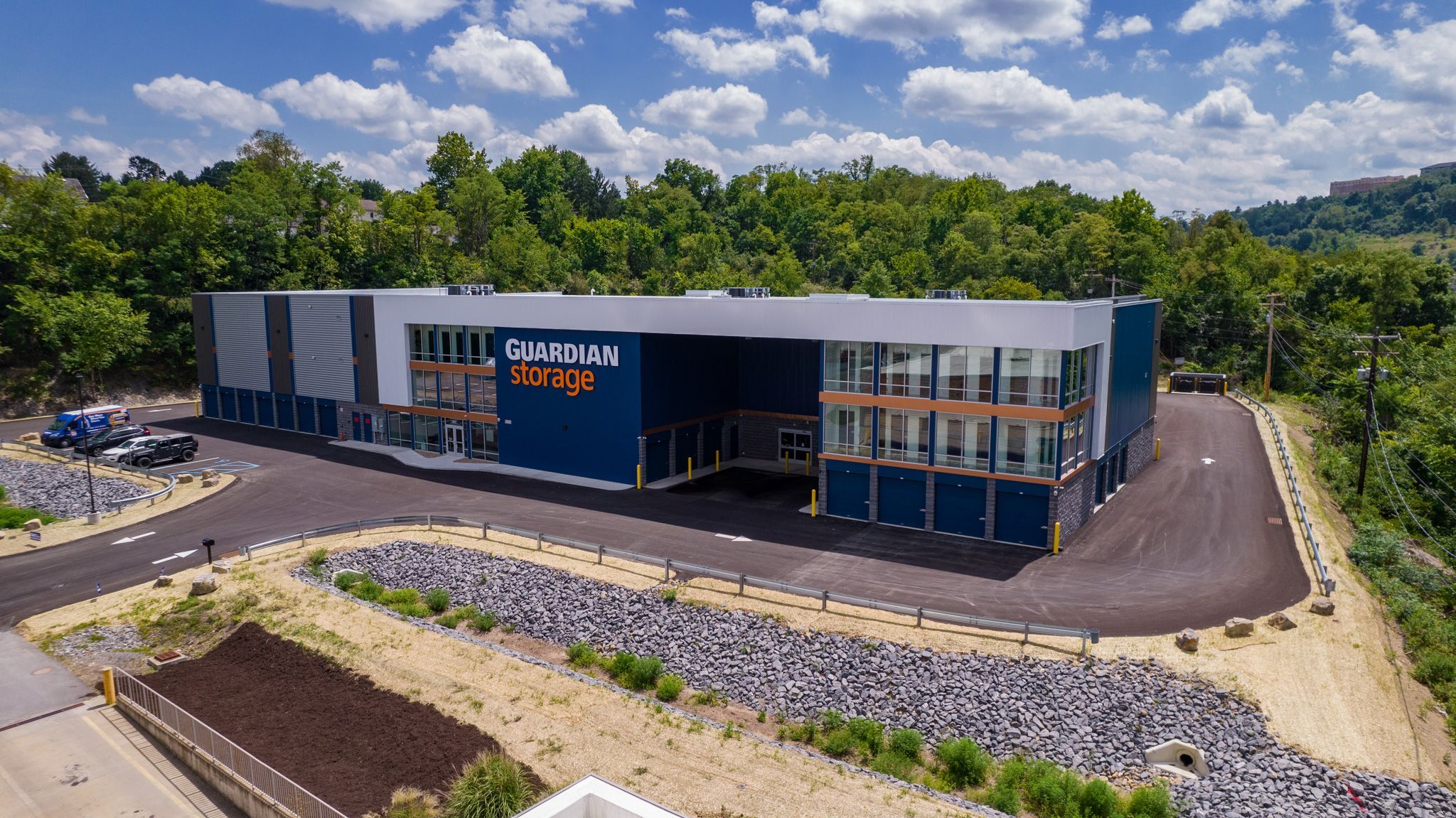A Sunny Investment: Solar Power at Extra Space | MSM
One of the best things about my position as senior vice president of facilities at Extra Space Storage is that I get to oversee our solar power program. Adding solar power at many of our stores has been a positive experience, and I hope that sharing details of our story will inspire others to think about solar power too.
Extra Space Storage has installed solar power at 185 wholly-owned stores in 16 states. Those solar panels are producing a lot of energy from the sun. That energy is referred to in terms of megawatts, but it can be difficult to visualize a megawatt. Think of it this way: One megawatt equals the energy it takes to run 10,000 individual 100-watt light bulbs for one hour.
The solar panels at our stores are producing 17.14 megawatts per hour. It is this harnessed energy that is motivating us to continue on the solar journey we first started eight years ago.
Going For The Win-Win
The decision to install solar has been a good one. Solar power is a good investment with long-term benefits. It helps us to be better stewards of the environment, while also making financial sense for the company. Our shareholders have expressed interest and excitement for solar power. It’s also important to our board of directors and executive management team.
There are a lot of reasons to install solar. The installation does not materially impact operations, and once the panels are in place and connected to the electrical grid, operating costs are reduced through lower electric bills. Other than exceptionally bad weather, no much interrupts the steady production of this sustainable energy production. And with solar power, there is less concern about rising costs from local utilities.
Solar installations allow us to reduce our carbon footprint and reap the financial benefits of tax credits from the federal government, as well as incentives from cities and states. The tax credits and incentives, together with reduced energy costs, help to improve our return on investment, or ROI.
In addition to choosing properties in areas with incentives, we also place a priority on installing solar at stores with higher utility usage. Examining electric bills helps us target those stores with higher usage and aids in deciding how many solar panels to install on a property. Placing panels on stores with high electric bills in areas with powerful incentives is a great way to enhance the ROI on solar. Solar is truly a win-win business decision!
Finding Net Zero
Fortunately, we generally do meet net zero energy consumption at many of our properties with solar installations. If a store reaches net zero, that means the amount of energy used by the store on an annual basis is close to equal the amount produced by solar at the property. Net zero is determined by the annual average consumption. Whether a site meets net zero sometimes depends on factors like using extra cooling during the summer in warmer climates like Arizona and using more heating in the winter in colder climates like New York or Massachusetts.
At Extra Space Storage, we have utilized a mixture of both ways to connect our facilities with solar to a local utility: a net energy metering (NEM) system or a feed-in tariff (FIT). With a NEM system, the electric bill is calculated according to the net energy used. Net energy is the difference between the amount of electricity produced by the solar power system and the amount provided by the utility company. The net difference is then credited on the utility bill and brings down operating costs. The value of the credit varies depending on where the property is located. In areas where the utility rate is higher, there is more economical advantage to getting to net zero.
With a FIT system, energy is sold back directly to the utility company. A FIT contract guarantees payments from the utility for kilowatt hours of energy produced by the system. With FIT, it is more financially beneficial to install as many solar panels on the roof as possible. With more panels, there is more energy to sell back to the utility company.
Tracking Solar Incentives
The hard work is not having solar panels; rather, it is in deciding where to install them. It is important to use a thorough vetting process to determine which properties will receive solar. Choosing an experienced solar power partner can make the process of deciding where to install solar much more efficient.
Tracking solar incentives is not an easy task, but a good partner has dynamic knowledge of national and local incentive programs and experience working with utility companies and contractors. For the last four years, Extra Space Storage has partnered with Safari Energy. They track incentive programs across the country and help us identify which stores are better suited for installing solar. Safari Energy also assists with the installation process.
Making Changes On A Smaller Scale
When it comes to helping the environment while also lowering operating costs, no one needs to be left out. There are several positive changes that small- and medium-sized businesses can make that will result in a lower carbon footprint, as well as financial savings.
Solar is one great option, but there are other less expensive projects that can be implemented on a smaller, incremental scale. One of the best examples is upgrading inefficient lighting to more efficient fixtures, including LED. If solar is installed in the future at a property with LED lighting, less energy is needed, so operating costs are even further reduced. Other simple upgrades that make a big difference in operating costs include installing occupancy sensors and timers and adding more efficient HVAC systems.
When other energy-efficiency projects have been completed, it may be time to consider solar power. Smaller businesses looking to add solar to existing properties can finance the system to avoid paying upfront. Another option is to lease the rooftop to a solar company and buy back the energy from them. In addition, developers building a property from the ground up don’t have to worry about installing solar power right away. Instead, developers can allow for any adjustments to the electrical system and roof that will be needed to install solar in the future. Then, after the property is open with a history of electric bills to review, the owner can make an informed decision on solar power based on electric usage.
Looking To The Solar Future
We plan to increase our solar installation cadence. Last year, we installed solar panels on 67 stores; in 2018, we plan to install solar panels on 80 stores, adding larger systems in some areas where needed. In contrast, we installed solar panels on just five stores when we started in 2010.
Today, we are dedicating more internal resources to solar. In 2010, adding solar power was one of several responsibilities of many of an individual at Extra Space Storage. Now we have a dedicated full-time solar manager who receives support from other team members.
We continue to do well by doing good, as we add additional solar projects across our portfolio, and provide a solid return for our shareholders, while reducing our impact on the environment.
—
Tim Arthurs is the senior vice president of facilities at Extra Space Storage.
More Content
Popular Posts
The self storage industry is in a precarious...
Like its name implies, Surprise, Ariz., a...
Joe Shoen has had enough.
Joe Shoen, CEO of U-Haul, has had enough.
In a record-breaking deal finalized May 12,...
Senate Bill 709 (SB709) has many in the...
Donald Trump has just reclaimed the White...
Self-storage operators wear a lot of hats....
The question of “abandonment” of stored...
In 1992, Clinton strategist James Carville...
Recent Posts
Occupancy data is arguably the hardest data...
With a commanding presence at 3517...
When Neville Kennard left for a work trip to...
Self-storage software is no longer...
The self-storage industry continues to...
Fires in California. Tornadoes in Kansas....
From policy pivots in Ottawa to tariff...
Self-storage operators have struggled to...



















